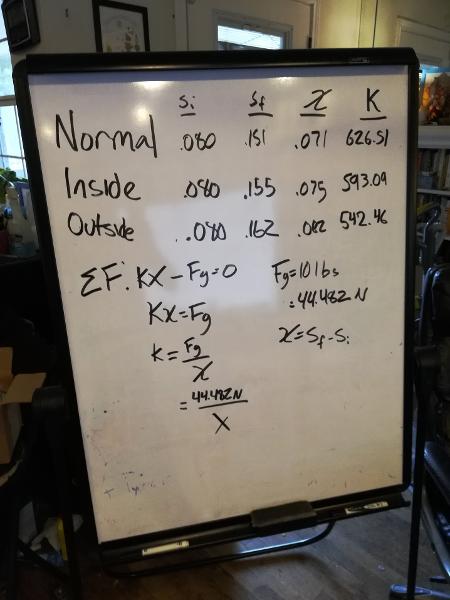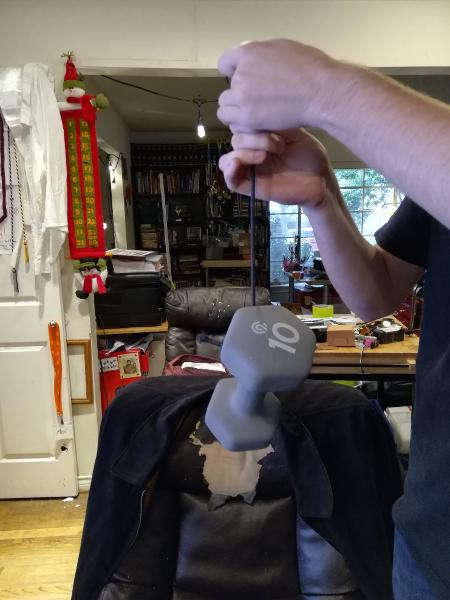Elastics Testing
Tags: design, think, and mechanicalPersonhours: 3
Task: Test wear and tear on our robot's bungees

This is the fifth or so article in our series on robotics testing. Today's spotlight will be on the constants of our robot's bungees, and how they're affected by various wear and tear. So, we took three bungees from the same set as the ones on our robot, and placed them in various places: stretched outside, stretched inside, and a control sitting in the robot room. The purpose of this is to see whether or not our bungees merit periodic replacements.
Procedure
- Cut three identical elastics
- Leaving one unstretched inside, place the other two stretched inside and outside
- Attach your chosen bungee to a 10 lb weight
- Positioning your hand 8 cm from the knot, pull upwards, recording this inital position as xi
- When the weight barely moves off of the ground, measure the knot-hand distance and record it as xf
- Using these values, calculate the elasticity constant for each bungee

Data
| Run | x-initial (m) | x-final (m) | Δx (m) |
|---|---|---|---|
| Normal | .08 m | .151 m | .071 m |
| Inside | .08 m | .155 m | .075 m |
| Outside | .08 m | .162 m | .082 m |
Calculations
W = 10 lbs = 44.482 N
x1 = .071 m, x2 = .075 m, x3 = .082 m
ΣF = Fsp - W = 0
Fsp = W
kx = W
k = W/x
k = 44.482/x
k1 = 626.51 N/m, k2 = 593.09 N/m, k3 = 542.46 N/m
Calulated Data
| Run | Elastic Constant (N/m) |
|---|---|
| Normal | 626.51 N/m |
| Inside | 593.09 N/m |
| Outside | 542.46 N/m |
Analysis
Assuming a standard deviation of 5%, we can perform a one-sample t-test to see if our results are statistically significant. We will test the inside/outside values against the contol.
Mean = 626.51 N/m
SD = 31.32
N = 3
α = .05
Ho: There is no significant difference between the unstretched band's elasticity and the stretched bands inside or outside
Ha: There is a significant difference between either the band left unstretched and the bands left stretched inside or outside
For the elastic left inside, we found a p=.2058. For those not accustomed to statistics, this means that there is a ~20% chance that our results come from chance. This is too high of a probability to say whether or not to say that staying inside affects the elasticity of a band.
For the elastic left outside, we found a probability p=.0433. This means that there is a 4.33% probability that these results come from chance. For most journals, the minimum p-value, or α, is .05 = 5%. Thus, we can safely say that elastics left outside can be damaged and will not work on the same level as the untouched bands.
